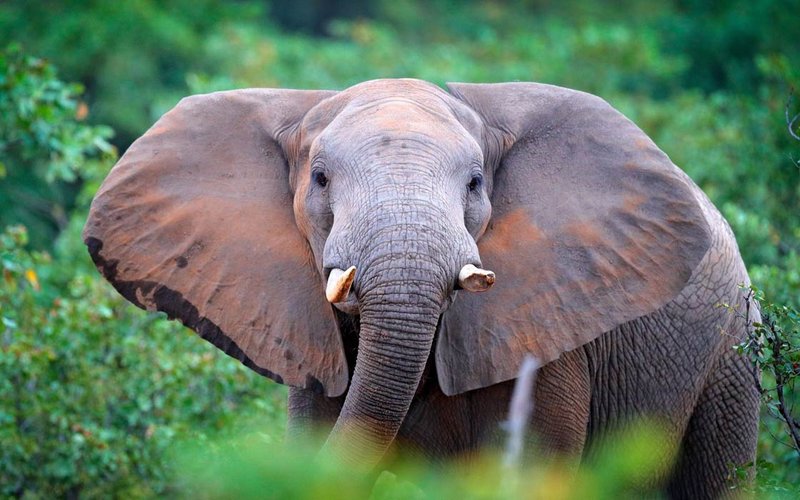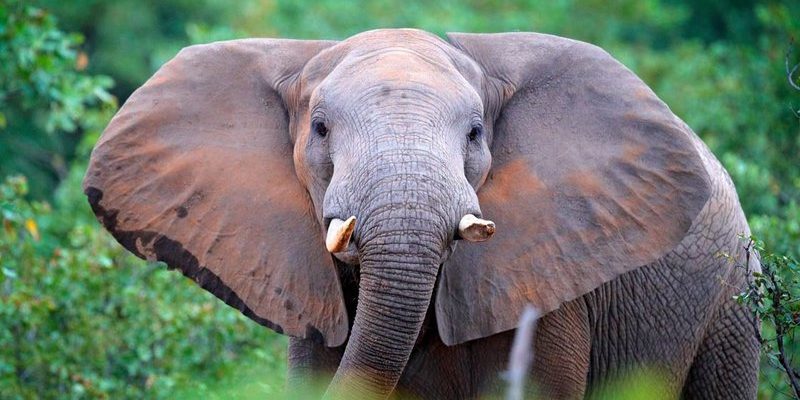
So, how do these gentle giants manage to live in such tough conditions? Let’s dive in and explore the incredible adaptations and behaviors that help African forest elephants beat the odds. It’s like peeling back the layers of a complex puzzle—each piece reveals a new insight into their survival tactics.
Physical Adaptations: Nature’s Toolkit
One of the first things you notice about African forest elephants is their smaller size. Unlike their savanna cousins, these elephants typically weigh between 10,000 to 14,000 pounds and stand around 8 to 10 feet tall. This smaller frame may seem like a disadvantage, but it actually helps them navigate the dense forests more easily. Imagine trying to squeeze through narrow paths in a jungle—being compact allows them to move around without getting stuck.
The forest elephant also has more rounded ears compared to other elephants. This isn’t just for style; these ears help them regulate their body temperature. In a humid environment, having larger ears acts like natural air-conditioning, allowing heat to escape more efficiently. It’s like how you might fan yourself on a hot day to cool down.
Their long, slender tusks are another fascinating feature. Unlike the thicker tusks of savanna elephants, forest elephants have tusks that are more adapted for digging up roots and peeling bark from trees. This helps them access food that is often hidden beneath layers of foliage. And let’s be honest: who doesn’t love a good snack, especially when it’s hard to find?
Diet and Foraging Strategies
You might be wondering, “What do these elephants eat in such a dense environment?” Great question! The diet of African forest elephants is quite diverse. They primarily eat leaves, fruits, bark, and branches, which are abundant in their natural habitat. Their ability to consume a variety of plant materials allows them to thrive where others might struggle.
These elephants are also known to eat a significant amount of fruits, especially those from trees like the African oil palm. When the fruits are in season, it’s like a buffet for the elephants, providing them with the nutrients they need to stay healthy. But here’s the kicker: because they roam vast territories, they often have to travel miles to find these food sources.
To find their meals, forest elephants employ a technique called resource tracking. They can detect the scent of ripening fruits from miles away due to their incredible sense of smell. Imagine having a built-in GPS that leads you to your favorite food spots—it’s a life-saver in the jungle!
Social Structure and Communication
The social structure of African forest elephants is another critical factor in their survival. They live in small family groups led by a matriarch, usually the oldest and wisest female. This is similar to how many animal species function, relying on the experience of the eldest to guide the younger members.
Communication plays a vital role in their social interactions. Forest elephants use a variety of sounds, including rumbles and trumpets, to convey different messages. They can even produce infrasound, which are low-frequency sounds that travel long distances through the dense foliage. This helps them stay connected with family members, no matter how far apart they might be.
Imagine having a superpower that allows you to talk to friends from miles away without using your phone—pretty cool, right? This ability not only fosters strong bonds among the herd but also plays a crucial role in avoiding predators. When one elephant senses danger, it can alert the rest of the group without a single word spoken.
Adaptations to Climate and Habitat
Forest elephants face unique challenges related to their climate. The rainforests can be hot, humid, and often experience heavy rain. To cope with this, they’re equipped with certain adaptations. For one, their skin is thicker and tougher than that of savanna elephants. This helps protect them from the elements and potential insect bites.
Additionally, their behavioral adaptations are just as fascinating. During the hottest parts of the day, these elephants often take refuge in shady areas or wallow in mud to cool down. Mud baths are not just for fun; they also help keep their skin hydrated and keep pesky insects at bay.
In the wet season, when it’s common to have flooding, forest elephants are known to change their travel patterns. They will avoid areas that become too muddy or waterlogged, opting instead for higher ground. It’s like how people might change their routes when they hear there’s been a lot of rain. This clever adaptation helps them navigate their environment effectively.
Conservation Challenges and Efforts
While African forest elephants are uniquely adapted to survive in their lush habitats, they face increasing challenges due to human activities. Habitat loss from logging, agriculture, and urban development poses a significant threat to their survival. Cutting down trees not only shrinks their living space but also limits their food sources.
Additionally, poaching remains a critical issue. Forest elephants are targeted for their ivory tusks, which are highly valued on the black market. Efforts to combat poaching have ramped up over the years, with organizations working to protect these magnificent creatures. Anti-poaching patrols and conservation initiatives are essential for ensuring the safety of forest elephants.
It’s essential for us to support conservation efforts in Africa. Raising awareness and participating in local initiatives can make a real difference. Every little bit helps, right? Supporting wildlife reserves and eco-tourism can provide much-needed funding for these efforts.
In conclusion, African forest elephants are truly remarkable animals, showcasing an incredible resilience in the face of adversity. Their physical adaptations, social structures, and survival strategies are all finely tuned to their environment. Yet, as much as they are shaped by their surroundings, they are also at risk due to human activities.
Understanding how African forest elephants survive in harsh environments can inspire us to appreciate and protect them even more. By advocating for their conservation, we ensure that future generations can continue to marvel at these gentle giants. It’s a reminder that every creature plays a role in the intricate web of life, and we all have a part to play in preserving it.

